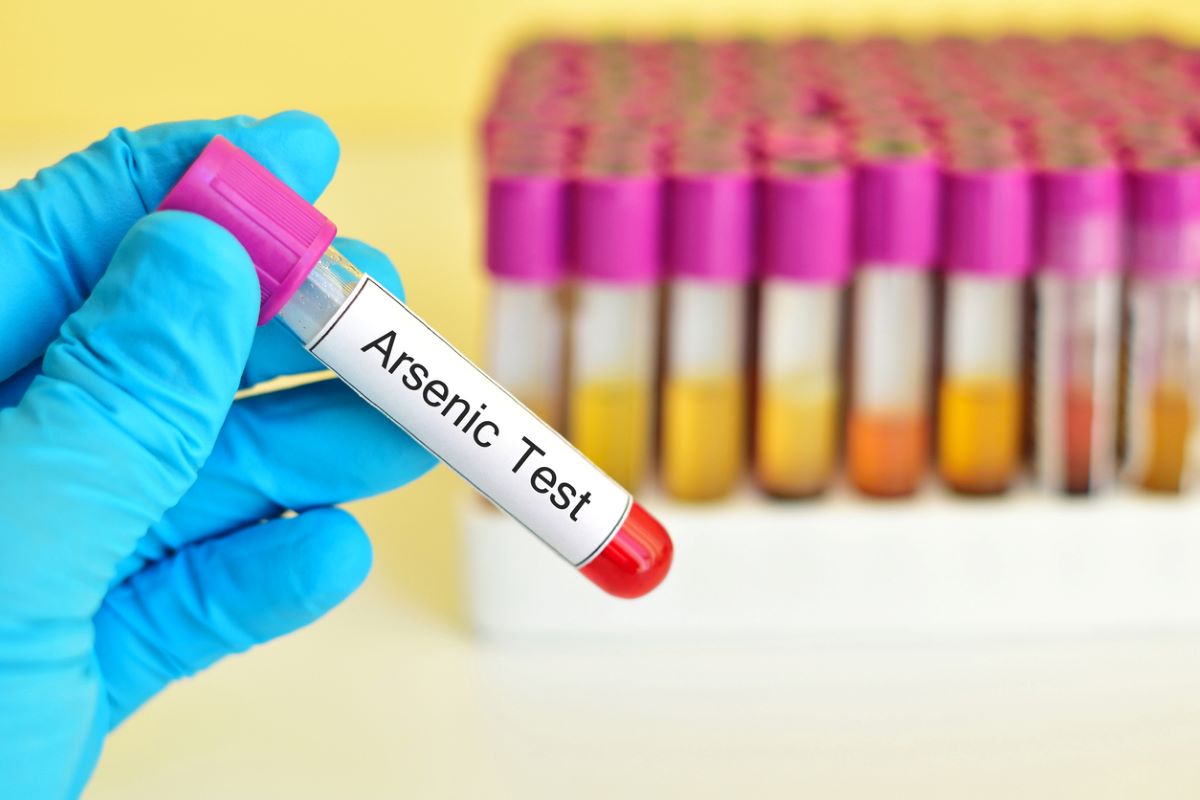Arsenic is both carcinogenic and a major contaminant of groundwater. The arsenic content of the Ganges catchment rose about 145 per cent between 2015 to 2020. This demands immediate attention from policy makers and environmentalists.
Arsenic affects millions of people worldwide. Globally, 108 countries are exposed to arsenic pollution. About 2.5 billion people depend on groundwater sources, out of which at least one-tenth are at risk of arsenic poisoning. Most of those at risk belong to the socio-economically marginalized population of Asian countries.
Over 1.157 million new cancer patients are registered each year in India, where 2.25 million people already live with the disease. According to cancer statistics in India, in 2018 the number of deaths due to cancer was 7.84 lakh. More than 70 per cent of West Bengal has a high concentration of arsenic in its groundwater. Out of 38 districts in Bihar, 18 have high arsenic contamination.
The WHO has set the standard for arsenic in groundwater at 10 microgram per litre. Studies show more than 100 times higher arsenic concentration in arsenic-affected regions of India. In India, arsenic pollution is prevalent in the Ganges floodplains. The groundwater of West Bengal, Bihar, Jharkhand, Chhattisgarh, Punjab, Haryana, Uttar Pradesh, Madhya Pradesh and north-eastern Indian states have elevated levels of arsenic.
India’s large rift-zone contains iron silicon magnetic rocks, which are rich in arsenic. The presence of arsenic containing minerals, such as biotite, magnetite, limonite, olivine, pyroxene, and amphiboles also elevate arsenic concentrations in groundwater. Arsenic poisoning through drinking and cooking with arsenic-laden water is reported across the nation.
Crops watered with arsenic-laden groundwater contaminate food grains and vegetables. These contaminated food grains affect people’s lives and livelihoods. Prolonged consumption of arsenic laden water and grains can lead to arsenic poisoning, hormonal disturbance, neurobehavioral abnormalities, tumours, and cancers of the liver, prostrate, kidney, lung and bladder. Arsenicosis is a deteriorating and disabling disease, which causes skin lesions and pigmentation on skin, palm and soles. Deterioration in physical appearance makes people socially excluded.
Arsenic contamination at an elevated range in any region can impact society through disability, poverty and societal stress. The majority of people affected by arsenic contamination in India live in rural areas and are not aware of the poisoning and possible treatment procedures. Creating awareness and providing proper medical care to arsenic-affected people can help to reduce the poisoning and extend lives.
The available arsenic remediation technologies are precipitation, adsorption, membrane filtration, reverse osmosis, ion exchange, phytoremediation, and biological treatment. But these technologies are highly dependent on electricity and thus are too costly for poor people. Apart from these, an in-situ arsenic remediation technology is a permeable reactive barrier. A permeable reactive barrier is a column filled with different materials such as zero valent iron and furnace slag embedded with sulphur reducing bacteria. These columns adsorb arsenic and restrict them from accumulating in water. These columns can be fixed into the water table. Ignorance of these remedies is a major challenge for India.
Clean water and sanitation are primary necessities of a healthy society. Every citizen has a right to clean water under Article 21 of the Indian constitution. Policy makers should encourage public awareness about arsenic contamination.
The state and Union governments should work hand in hand to develop feasible technologies to clean arsenic-laden water. Most of the technologies developed to treat arsenic-laden water never leave laboratories, and are therefore useless to tackle this problem. More research funds need to be allocated for further research and technology generation. Clean (and arsenic-free) water is vital to sustain life. Protecting such water needs to be a priority for all of us.
(The writers are, respectively, an independent researcher and Dean at Jindal School of Environment and Sustainability, O.P. Jindal Global University, Sonipat, Haryana, India)












